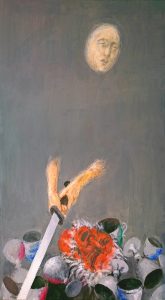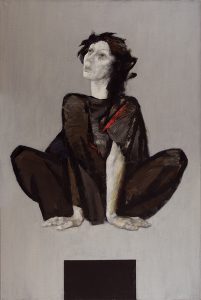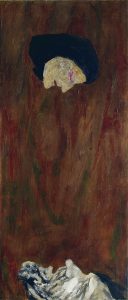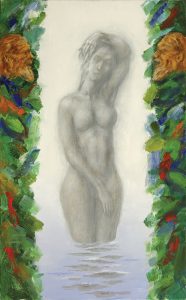BIBLICS LADIES 2013-2015
–
–
Sajandite sügavuses, kui kirjasõna hakkas levima meie esivanemate suitsutaredes, osutus tihti esimeseks raamatuks Piibel. Pikkadel pimedatel talveõhtutel, peeruvalgel, luges oskaja seda kogu perele ette. Sellest võis kasvada võimsaid transtsendentaalseid kogemusi, kuid mõju haaras kindlasti ka Piibli kui kirjandusteose sõnajõud. Piibel sisaldab hulganisti lugusid, mis oma sugestiivsuselt ja võimsuselt oleksid ehk tänapäeva mõõdupuude järgi võrreldavad näiteks Gabriel Garcia Màrquezi lummaga. Pole põhjust kahelda, et neid tekste läbi taresuitsu endasse imenud inimesed võisid kujuneda emotsionaalselt ja kujutlusvõimelt harituteks. Pole tarvis karta seda sõna. Sajandite jooksul tungisid need nimed, lood ja tähendused sügavale meie rahva alateadvusesse, kujundades pilte, mida tänaseni näeme ja helisid, mida kuuleme. See on hindamatu pärand. Sissekasvanult istuvad see meis ikka veel, kuigi nähtavas teadvuses me seal sisalduvat tihti ei suuda enam tuvastada. Nimed Juudit, Salomea, Olovernes ei pruugi meile midagi tähendada – peale teadmise, et nad midagi valusalt tähendavad. Neid varjatud seoseid ja kokkupuutepunkte olen püüdnud uurida
.
In the depths of centuries, when the written word began to spread in the sheds of our ancestors, the Bible often turned out to be the first book. On long dark winter evenings, in the twilight, the adept read it to the whole family. It may have evolved into a powerful transcendental experience, but it was certainly also influenced by the power of the Bible as a literary work. The Bible contains many stories that, in terms of their suggestiveness and power, may be comparable to the spell of Gabriel Garcia Màrquez, for example. There is no doubt that the people who absorbed these texts in the smoky shed could have become emotionally and imaginatively educated. No need to be afraid of that word. Over the centuries, these names, stories, and meanings have penetrated deep into the subconscious of our people, shaping the images we see and the sounds we hear to this day. This is an invaluable legacy. It is still deep inside of us, although in the visible consciousness we can often no longer recognize it. The names Judith, Salomea, Holofernes do not necessarily mean anything to us – except knowing that they mean something painful. I have tried to explore these hidden connections and points of contact.
Suurelt vaatamiseks kliki pidil!
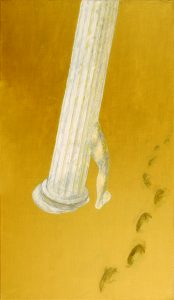
LOTI NAINE. SAMMAS KESET KÕRBE – WIFE OF LOT. PILLAR IN THE MIDDLE OF THE DESERT. 2013, akrüül, lõuend 90×60
*
JUUDIT JA OLOVERNES – JUDITH AND HOLOFERNES. 2014, õli, lõuend 95×70
*
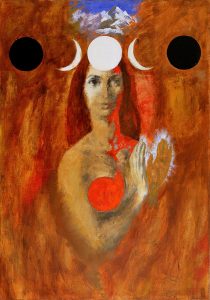
SEEBA KUNINGANNA – QUEEN OF SHEBA. 2014, õli, lõuend 100×70
*
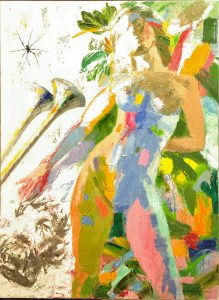
SALOME, PASUNAD JA RISTIJA JOHANNESE PEA – SALOME, TROMPETS AND THE HEAD OF JOHN THE BAPTIST. 2013, õli lõuendil 100×73
*
MARIA MAGDALEEENA – MARIA MAGDALENA. 2014. Akrüül, õli 105×70
- Naiste nimedele lisatakse Piiblis reeglina viide, kelle naise või tütrega on tegemist. Maarja Magdaleenast teame ainult tema nime. Küllap pärines ta madala või ebamäärase sotsiaalse staatusega keskkonnast. Kristus olevat temast välja ajanud seitse kuradit Teda on peetud hetääriks. Neid vanu tekste lugedes tundub siiski, et ta oli lihtsalt äärmuslikult vaba ja sõltumatu vaimulaadiga inimene ja sellisena sai ta koos apostel Johannesega Kristusele lähedasemaks, kui mitmed teised jüngrid. Võimalik. et ta oli Kristuse kallim. Teatavale perekondlikkusele viitab seegi, et teda mainitakse sageli koos Kristuse ema neitsi Maarjaga (sealjuures tuuakse tema nimi tihti koguni esimesena). Varakristlikud kirikuisad on nimetanud Maarja Magdaleenat „apostlite apostliks“ mis vihjab suurele vaimujõule. Kui Kristus vangistati ja viidi hukkamisele, hoidusid teised jüngrid hirmunult eemale. Ainult Maarja Magdaleenal oli julgust jääda lõpuni Kolgatale ja osaleda ka lunastaja haudapanekul. Ka oli ta esimene, kellele Kristus pärast ülestõusmist ilmus, Selles võiks näha teatavat sümboolset teatepulga üleandmist. Siiski keeldusid teised apostlid uskumast tema sõnu juhtunust, vaid võtsid sündinud ime omaks alles siis, kui Kristus ka neile ennast näitas. Küllap võis pinget Maarja Magdaleena ja ülejäänud vennaskonna vahel märgata juba varem. Ta kadus. Prantsuse Vahemereranniku varakristlik pärimus kuulutab, et Maarja Magdalena olevat erakuna sinna jõudnud ja oma elupäevad sealkandis lõpetanud.
.
As a rule, the Bible adds a reference to the names of women regarding whose wives or daughters they are. Of Mary Magdalene, we only know her name. She probably came from an environment with low or uncertain social status. Christ has expelled seven devils from her. She has been considered a prostitute. However, reading these old texts, it seems that she was simply a person of an extremely free and independent spirit, and as such she became closer to Christ than many other disciples – with the apostle John. Possibly she was the darling of Christ. A certain familiarity is also indicated by the fact that she is often mentioned together with the Virgin Mary, the mother of Christ (above all, her name is often mentioned first). Early Christian fathers called Mary Magdalene the “apostle of the apostles,” alluding to a great spiritual power. When Christ was imprisoned and sent to execution, the other disciples stayed away in fear. Only Mary Magdalene had the courage to stay at Calvary/Golgotha until the end and to participate in the burial of the Savior. She was also the first to meet Christ after the resurrection. However, the other apostles refused to believe what had happened, they did not accept the miracle until Christ revealed himself to them. The tension between Mary Magdalene and the rest of the fraternity must have been noticable before. She disappeared. The early Christian tradition of the French Mediterranean coast declares that Mary Magdalene stayed there till the end of her life..
.
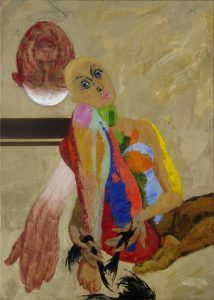
SIMSON JA DELIILA. 2013, akrüül, lõuend 105×75. Erakogu
*
PIETÀ. 2015, õli, lõuend 133×55
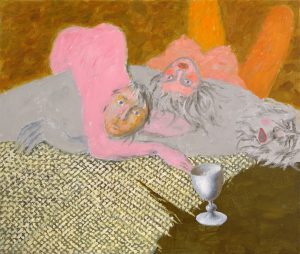
LOTI TÜTRED. 2014, akrüül, õli lõuend 80×95
*
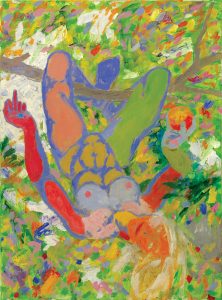
EEVA PUU OTSAS – EVE ON THE TTRTEE. 2014, õli, lõuend 95×70. Erakogu
*
SUSANNA SUPLEB. 2014, akrüül, õli, pliiats, lõuend 105×65. Erakogu

